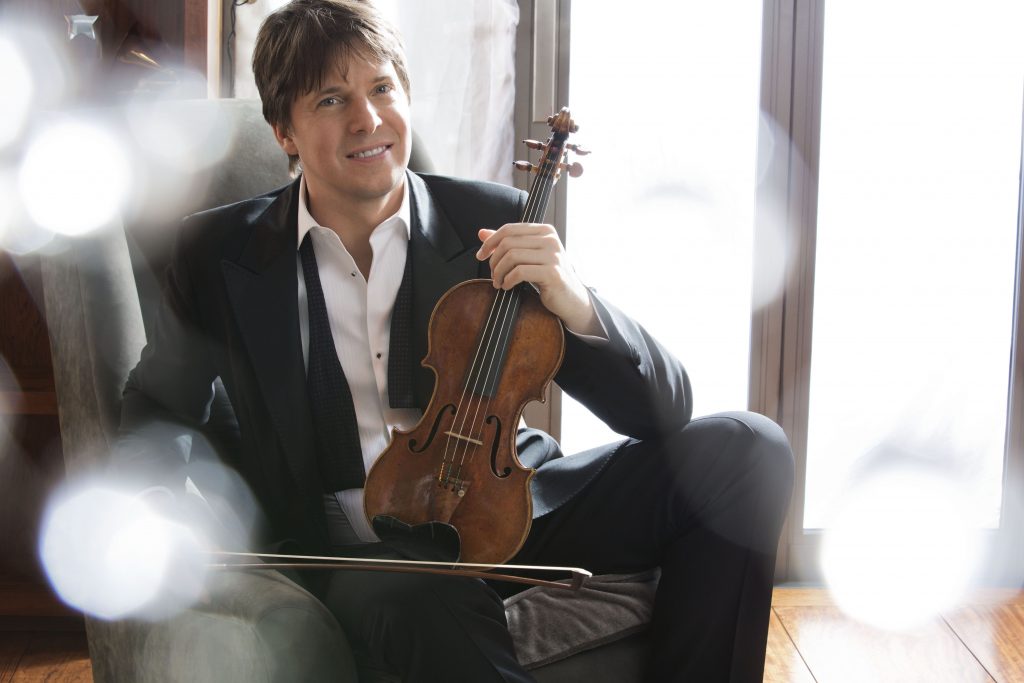
By Robert Croan
England’s Academy of St. Martin in the Fields is arguably today’s No. 1 chamber orchestra, but it was likely the presence of its music director and violin soloist, Joshua Bell, that brought a sizable crowd to the Au-Rene Theater in Fort Lauderdale on March 25. This was the second of three concerts in the season’s admirable and valuable Broward Center Classical Series.
The Academy was founded by the late Neville Marriner in 1958, named after the London church which was its first performing venue. Bell has been the orchestra’s leader since 2011. It’s a conductor-less ensemble, with 40 musicians at full force (often less, according to the demands of any particular score), in which Bell sits in the concertmaster position, playing intermittently with the first violins, giving tempos, cues, entrances and cutoffs. The result is major symphonic literature performed by world-class musicians with the intimacy and transparency of chamber music.
The Broward program was of the easy listening variety: Mendelssohn’s Midsummer Night’s Dream Overture, a Mozart violin concerto and a Beethoven symphony. Great music, deservedly part of the canon, but all composed between 1775 and 1826, which raises the question of how the classical music industry can expect to attract young audiences when the newest piece offered is nearly two centuries old. No wonder most of the enthusiastic audience was in the over-50 age group. The next concert will offer three Beethoven string quartets played by the renowned Danish String Quartet – the newest of the three composed guess when: 1826.
That said, Bell and the Academy provided a splendid musical evening. Soloing in Mozart’s Violin Concerto No. 4 (K. 218), Bell multitasked by conducting the purely orchestral sections with sharp definition (conceding to the next-in-line violinist, Harvey de Souza, to give cues while he was playing), producing some of the most beautiful and expressive sounds his instrument can yield. He has one of the most subtle and varied coloristic palettes among contemporary violinists. It is, of course, significant that this performer plays on a magnificent 1713 Stradivarius.
The opening movement bristled with a swaggering statement of the main theme. The andante was songful and sweet, while the final Rondeau captured Mozart’s playful humor and exploration of 18th-century dance rhythms. In all, this was a sublime interpretation, peppered with Bell’s own extended cadenzas – as noteworthy for their compositional originality as for the spectacular opportunities they afford the soloist for technical display.
The full ensemble’s unique qualities were most salient in Beethoven’s Symphony No. 6, called the Pastoral Symphony because its five movements depict, variously, the countryside, a brook, a peasant dance, a thunderstorm and a shepherd’s song. These elements are often lost in large symphony orchestra performances, but as played here, by an orchestra closer in size to what Beethoven would have had, the balance favored woodwinds and brasses over strings and allowed all sorts of colorful details that we may have never before noticed, to come through.
Just a few examples: the lightness and lilt of the opening theme, enhanced by Bell’s brisk tempos and willingness to allow small rubatos (slowing or speeding up of a few notes within a phrase), along with some brisker-than-normal tempos. There were the lilting undulations of the slow movement, along with mini-duets between flute and oboe, and the piquant bird calls. In context, the thunderstorm, relatively restrained here, actually emerged more threatening and intense than usual.
The Mendelssohn overture, which opened the program, had many of these same qualities. The simulation of the donkeys’ hee-hawing was funnier than most, the elfin high wind sounds were exquisite, hardly mitigated by an occasional imprecise attack or a morsel of less-than-accurate horn playing while the group was warming up.